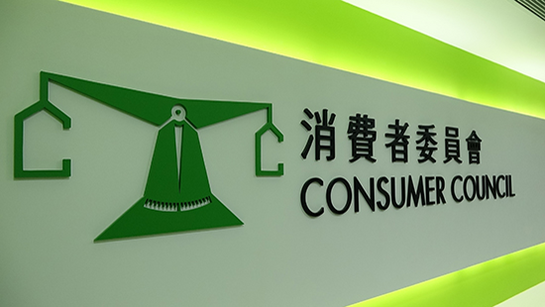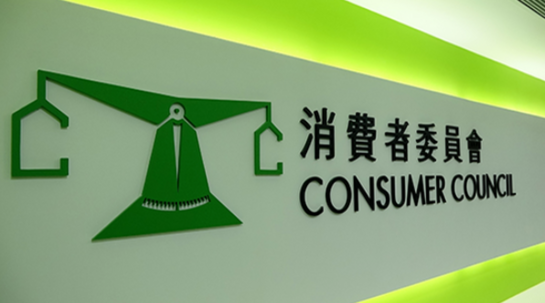- The Consumer Council (the Council) is pleased to submit its views with respect to the consultation paper issued by the Insurance Authority (IA) on the draft rules to be made under sections 21A and 129 of the Insurance Ordinance (Cap. 41), namely the Insurance (Public Disclosure) Rules.
The Council’s Overall Stance
- The Council is in principle supportive of the IA’s introduction of new rules pertaining to the disclosure of information about the insurer’s state of affairs according to the risk-based capital regime (RBC regime). The Council believes this would strengthen consumers’ right to be informed and facilitate their decision making on insurance products.
- In the following parts, the Council puts forward its responses to the consultation questions and views for optimising the proposed rules from a consumer protection perspective.
Responses to Consultation Questions
Scope of application of the draft rules
- The Council generally agrees with the proposed scope of all applicable authorised insurers. Holding them to high transparency standards would not only help consumers to make informed decisions but also maintain market confidence.
- While the scope is considered reasonable, the Council would like to invite the IA to revisit the proposal to exempt run-off insurers. According to Section 2.1 (a) of the Guideline on Enterprise Risk Management[1], run-off insurers are exempted from the aforesaid Guideline only when they have ceased accepting new insurance business and are in the course of running off their liabilities with an insignificant run-off portfolio in Hong Kong. However, the draft rules as described in the consultation paper did not specify whether all run-off insurers would be exempted regardless of their status. The Council is of the view that run-off insurers that are still active and/or with significant run-off portfolio might still affect a considerable group of consumers and should therefore be subject to the draft rules. The IA may consider clarifying and refining the exemption details to ensure consistency and transparency in the regulatory frameworks and uphold high consumer protection standards.
Requirements on the timing of disclosure
- The Council agrees in principle with the proposed requirements on the timing in which the specified information must be disclosed. The request that insurers disclose audited financial statements initially within 8 months during the transition period that ends in June 2027 and subsequently within 6 months is believed to have reasonably considered both the time that insurers need for preparing accurate and comprehensive reports to meet the requirements under the RBC regime, and the need of consumers and market stakeholders for timely and relevant information. Moreover, the drafted time frame is in line with the Insurance Core Principles 20 Public Disclosure Guidance (ICP 20 Guidance) proposed by the International Association of Insurance Supervisors (IAIS), which suggests that insurers make audited financial statements available at least annually[2].
- Having said that, the Council considers that the listed and resourceful insurers should be encouraged to take the initiative to disclose the audited financial statements at the earliest opportunity during the transition period, given the proposed extended timeline differs from the existing 6-month requirement for annual financial disclosures. By doing so, they can set a positive example and lead the industry in transparency and accountability. This proactive approach will not only enhance stakeholder trust but also facilitate informed decision-making among consumers.
- The Council further opines that the obligations of insurers should not be limited to information disclosure on a regular basis but extend to proactive notification to the public, so as to align with the underlying rationale of the IA’s requirement for self-reporting material matters, i.e. to uphold consumer interests[3]. Aside from reporting annually, the insurer should notify the insured in a timely manner on significant events or updates under the remit of the RBC regime, such as changes in auditors, investment assumptions and methods used for valuation of investments, and large fluctuations in the capital adequacy. The Council believes such a practice could ensure consumers are alerted in time and have reasonable and sufficient time to take the necessary action accordingly without causing social panic.
Requirements on the information disclosure manner
- While acknowledging the comprehensiveness of the proposed information disclosure manner for insurers, the Council deems that the following areas could be optimised to provide further protection to the insured.
Accessibility to information
- The Council notes that the audited disclosure statements will be expected to be available to the public on the insurer’s or its group company’s internet website. While the Council understands that uploading the statements on the website might be the most accessible way, not all consumers are comfortable accessing the information online. Some vulnerable consumers, such as the elderly, might not possess sufficient digital literacy to do so or have access to the Internet. Therefore, it is important to take into account the diversity of disclosure channels so as to ensure the public’s accessibility to information. Despite that insurers are also required to make physical copies of disclosures available upon request, the Councils deems further efforts could be devoted to ensuring the provision of printed copies. For instance, the IA could develop a clear service pledge to encourage insurers to fulfil such requests promptly. This approach ensures that those who prefer or require physical documents can access the necessary information without imposing undue operational burdens on insurers.
- In fact, ensuring “easily accessible and up-to-date” information is part of the ICP 20 Guidance. To keep up with the international conventions, the Council suggests the IA consider providing further requirements for disclosure channels.
Consistency and comparability of information
- The Council opines that consistency and comparability of information are of paramount importance. To take the Monetary Authority of Singapore (MAS) as an example, it emphasises in its Public Disclosure Requirements that “a licensed insurer must provide information which is comparable to that provided by other insurers operating in the same market and consistent over time so as to enable the person reading the information to discern relevant trends”[4].
- Moreover, the Council opines that the IA should require insurers to develop a simplified version of the audited financial statement, for instance, in the form of a summary report or key facts statement that distils key information into a more comprehensible format for consumers. Given that the financial metrics can be difficult for the general public, especially those with lower financial literacy and the vulnerable consumers, to apprehend, the simplified version can focus on the most relevant aspects of the financial data, such as essential figures like total assets, liabilities and net income. The Council notes that the IA imposes a similar requirement for certain products (such as Investment-Linked Assurance Scheme products) and types of consumers (such as Mainland policy holders who may not be familiar with the relevant requirements in Hong Kong)[5]. Therefore, in line with the rationales behind the foregoing requirements, which aim to provide adequate and clear information and enable consumers to make an informed decision, the Council believes this practice could be applicable to the disclosure of audited financial statements as well so as to facilitate the public’s grasp of the financial stability of the insurer.
Requirements on the information to be disclosed
- The Council generally agrees with the requirements on the information to be disclosed and presented in the form of a standard disclosure template. Nevertheless, the Council notes that some sections in the proposed template are relatively ambiguous or descriptive in nature, such as “Corporate Governance Framework”. Thus, it is suggested to require insurers to fill in further details in these sections, such as their internal control, risk management and ways to put it into practice, as exemplified in the disclosure of corporate governance framework of the ICP 20 Guidance.
- Moreover, the Council suggests that the IA, especially during the transition period, keep monitoring the effectiveness of and compliance with these draft rules, so as to ensure the provision of meaningful and useful information to the general public to make decision on the insuring risks. For instance, the IA may consider gathering data on how well the disclosed information meets the needs of the public and market stakeholders. It is also proposed that the IA should keep an eye on the global environment and make local adjustments when appropriate. This iterative process will enable the IA to refine the rules, thereby ensuring that they are robust and aligned with both local conditions and international standards.
- Meanwhile, the Council understands that the rules are proposed based on the RBC regime. However, in view that different risks are growing both locally and globally nowadays, such as cybersecurity, the Council anticipates consumers will be increasingly concerned about risks pertaining to other facets in addition to adequacy of capital. The Council hereby invites the IA to explore the feasibility of broadening the scope of information disclosure in the future.
Other Comments/Suggestions Related to Public Education
- In addition to the above responses to specific consultation questions, the Council provides further comments/suggestions below as supporting measures for the draft rules and intensification of consumer protection.
- Given the novelty and complexity of the financial matrix, the Council is concerned that consumers might not be aware of the new rules, or, even if they are, possess adequate financial literacy to interpret the information disclosed. Hence, it is of paramount importance for the IA to continuously carry out education and publicity efforts to raise public awareness and understanding. Topics could include (i) overview of insurance regulation, (ii) financial matrix and data apprehension, (iii) consumer rights in insurance, (iv) channels to check the financial statements of the insurer, etc.
- While noting that the IA has been putting effort in public education in choosing suitable insurance plans, the Council still believes the IA and insurers play an important role in driving the public’s understanding of the financial data. The Council foresees that with the collaborative efforts of these parties, public education would be implemented more efficiently, and consumers would thus be able to acquaint themselves with insurance before engaging in making selection.
Conclusion
- The above comments aim to enhance market transparency and better safeguards of consumer rights. The Council believes that by refining and finalising the proposed rules accordingly, consumers will have access to vital information that empowers them to make informed decisions.
[1] This is a guideline issued by the IA and based on the same RBC regime with consumer-related provisions (such as timely communication to customers on policy information and the integrity of policy advice), https://www.ia.org.hk/en/legislative_framework/files/GL21.pdf




